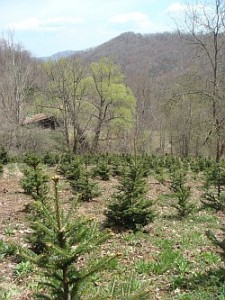Controls Based on Treatment Windows – Spring
go.ncsu.edu/readext?298560
en Español / em Português
El inglés es el idioma de control de esta página. En la medida en que haya algún conflicto entre la traducción al inglés y la traducción, el inglés prevalece.
Al hacer clic en el enlace de traducción se activa un servicio de traducción gratuito para convertir la página al español. Al igual que con cualquier traducción por Internet, la conversión no es sensible al contexto y puede que no traduzca el texto en su significado original. NC State Extension no garantiza la exactitud del texto traducido. Por favor, tenga en cuenta que algunas aplicaciones y/o servicios pueden no funcionar como se espera cuando se traducen.
Português
Inglês é o idioma de controle desta página. Na medida que haja algum conflito entre o texto original em Inglês e a tradução, o Inglês prevalece.
Ao clicar no link de tradução, um serviço gratuito de tradução será ativado para converter a página para o Português. Como em qualquer tradução pela internet, a conversão não é sensivel ao contexto e pode não ocorrer a tradução para o significado orginal. O serviço de Extensão da Carolina do Norte (NC State Extension) não garante a exatidão do texto traduzido. Por favor, observe que algumas funções ou serviços podem não funcionar como esperado após a tradução.
English
English is the controlling language of this page. To the extent there is any conflict between the English text and the translation, English controls.
Clicking on the translation link activates a free translation service to convert the page to Spanish. As with any Internet translation, the conversion is not context-sensitive and may not translate the text to its original meaning. NC State Extension does not guarantee the accuracy of the translated text. Please note that some applications and/or services may not function as expected when translated.
Collapse ▲SPRING: APRIL THROUGH BUD BREAK
 Stages of pests. In April and early May, most pests are very active.
Stages of pests. In April and early May, most pests are very active.
- RBM — Mites in buds.
- EHS — All stages present. Crawlers becoming more common.
- BWA — Adults may start to lay eggs.
- BTA — Eggs continue to hatch. Stem mothers, the first twig aphid form, are molting into adults and will start to produce live young which quickly increases numbers.
- Cinara aphids — Cinara aphids continue to be very active.
- SSM — Spider mites are starting to hatch and feed.
- HRM — Rust mites very active. Numbers continue to increase.
- Predators — Most predators are starting to be more active and commonly found. The activity increases as temperatures increase.
Advantages to spring applications. April is a good time of year to control most pests. It is certainly the traditional treatment window for Fraser fir pests.
Typically rosette bud mites are controlled during shoot elongation. However, RBM can be controlled before bud break using the systemic product, Movento. There are some indications that use of this product with a mistblower is providing good RBM control.
Disadvantages to spring applications. One of the disadvantages to treating for pests in the spring is finding time to do it. With planting, fertilizing, and even herbicide applications, there often isn’t enough time to treat for insects. Also, the weather is quite variable. It is often windy and rainy, making it hard to find ideal conditions for application.
Twig aphid control can be hampered by the production of cones on the trees. Once the cones are produced, the aphids can hide under the bracts and be protected from insecticide applications. One product that still works once cones are present is Dimethoate which is quick acting and slightly systemic. If other products are used, either apply before cones are formed, or remove the cones before treatment.
Another disadvantage to spring applications is that is greater impact on predators and pollinators. Treatments made with the synthetic pyrethroids may cause rust mite outbreaks the following year. Bees are attracted to purple deadnettle and wild mustard. Protect bees by either removing flowering ground covers or spraying in the evening or night.
Spring is also not the ideal time to treat for EHS. If one goal of applications is to treat for EHS, wait as close to bud break as possible.
| Pesticides | RBM | EHS | BWA | BTA* | Cinara** | SSM | HRM |
|---|---|---|---|---|---|---|---|
| Bifenthrin products(Talstar, Sniper) | None | None | Excellent | Excellent | Excellent | Excellent | None |
| Asana | None | May be some suppression but not long lasting control. | Excellent | Excellent | Excellent | Non. | None |
| Dimethoate | None | May be some suppression but not long lasting control | Poor | Excellent | Excellent | Excellent control of active mites but eggs not controlled. | Excellent control of active mites but eggs not controlled. |
| Asana + Dimethoate | None | Wait as close to bud break as possible for better control. | Excellent | Excellent | Excellent | Excellent control of active mites but eggs not controlled. | Excellent control of active mites but eggs not controlled. |
| Safari | None | Is probably too early to get good control. | Excellent | None | Good | None | None |
| Movento | Good | Poor | Excellent | Good | Good | Unknown. May have some activity. | Unknown. May have some activity. |
*BTA control is for that spring. Control will not carry over to the following year.
**Cinara aphid control is for that spring. If trees will be cut in the fall, trees will have to be retreated that time.
For more information on mite control see: Focus on Mite Control.


